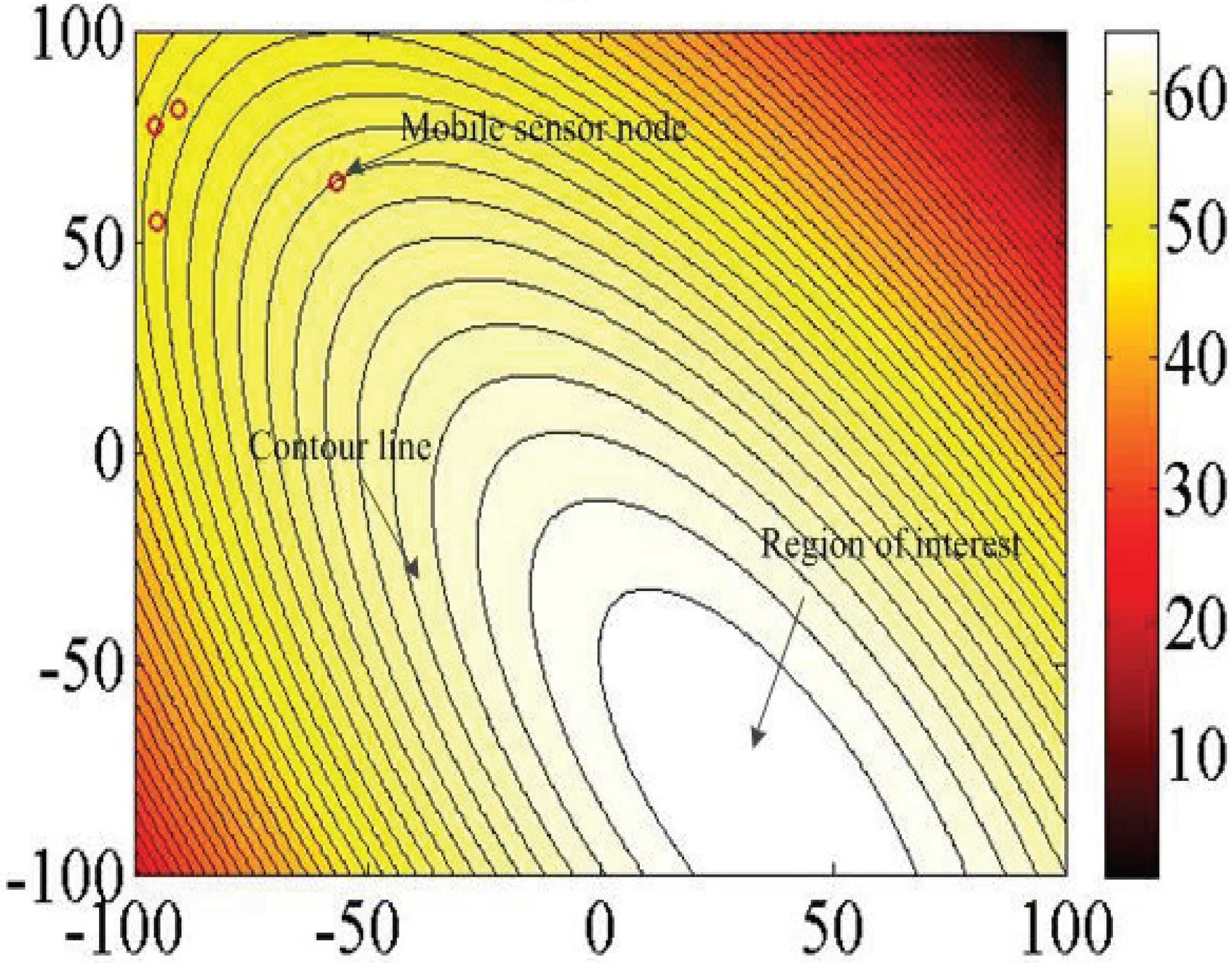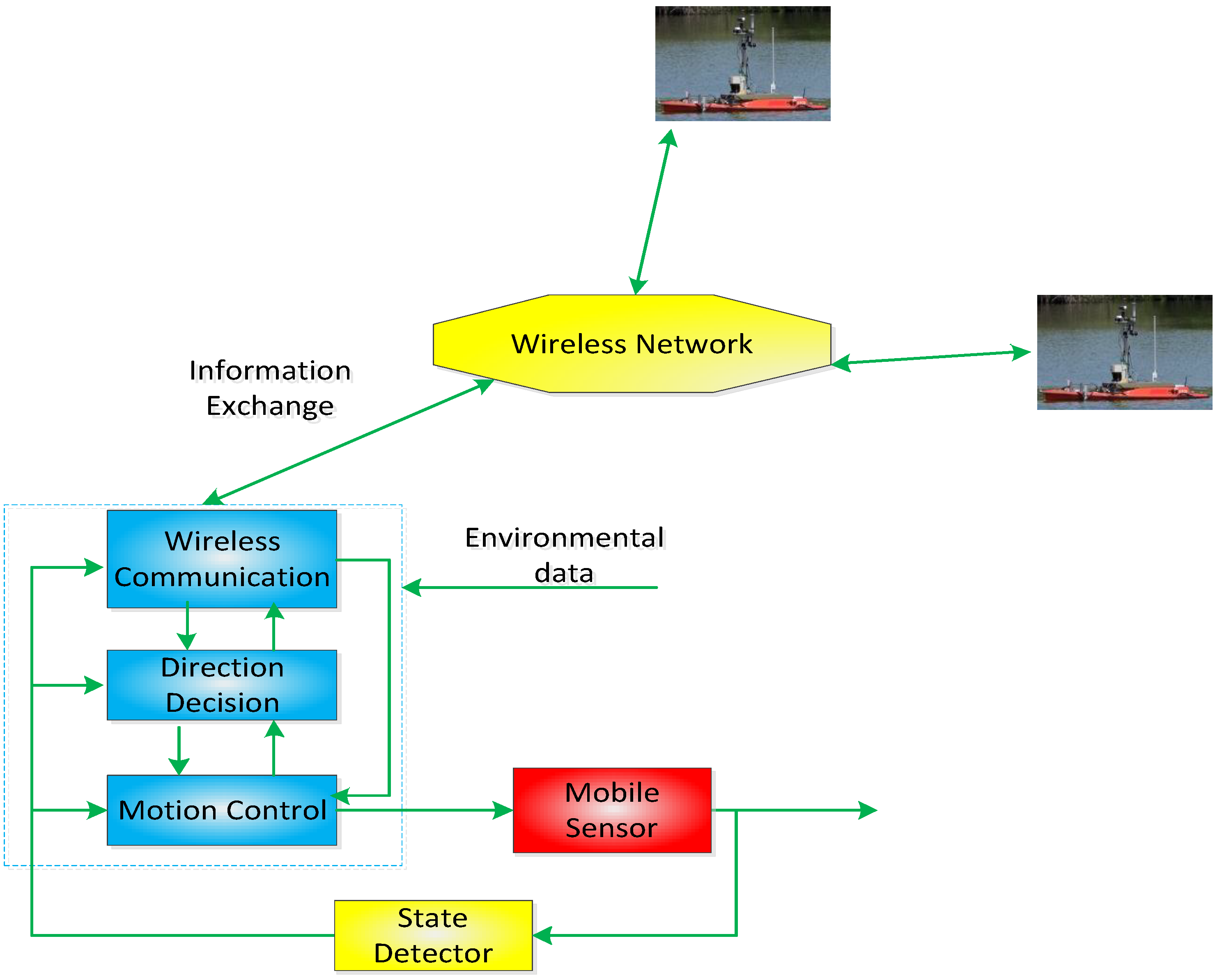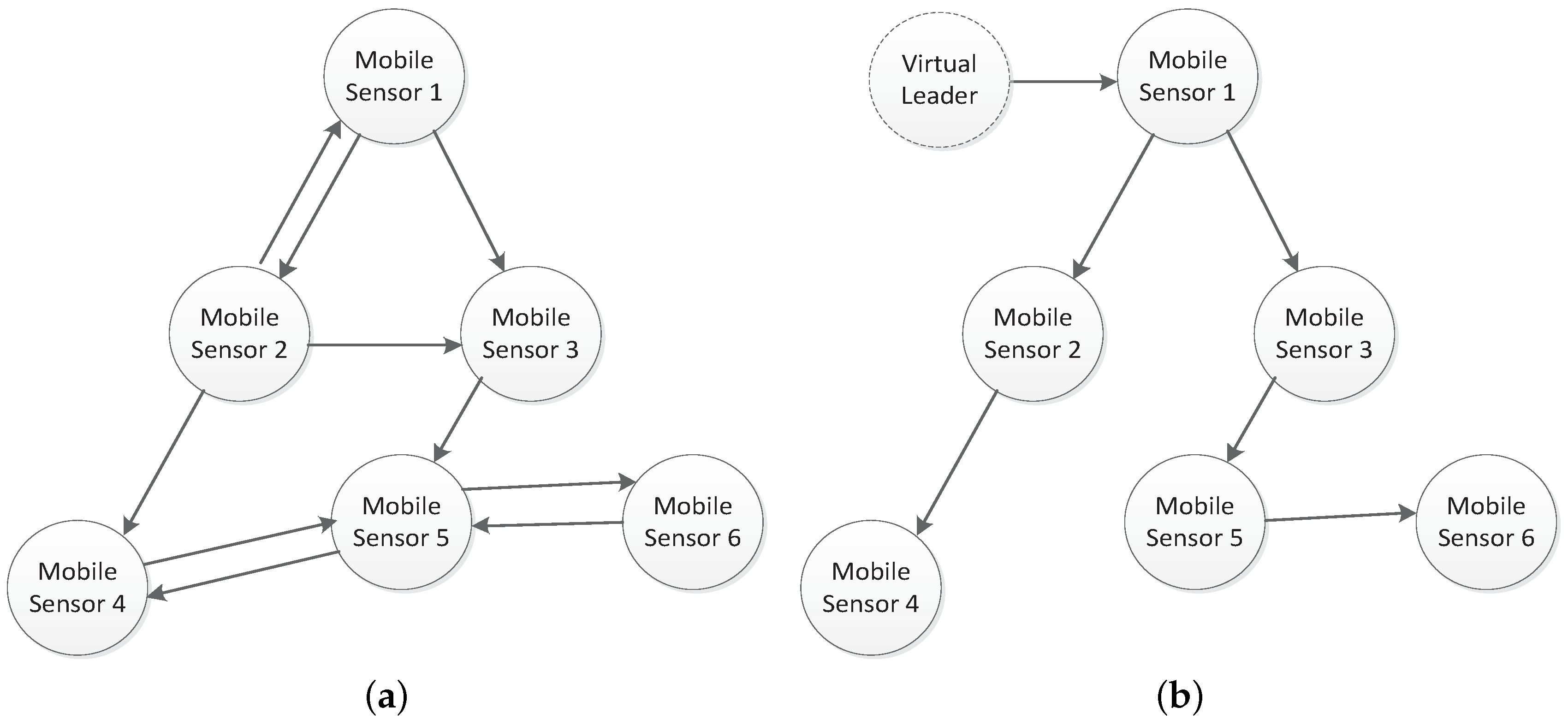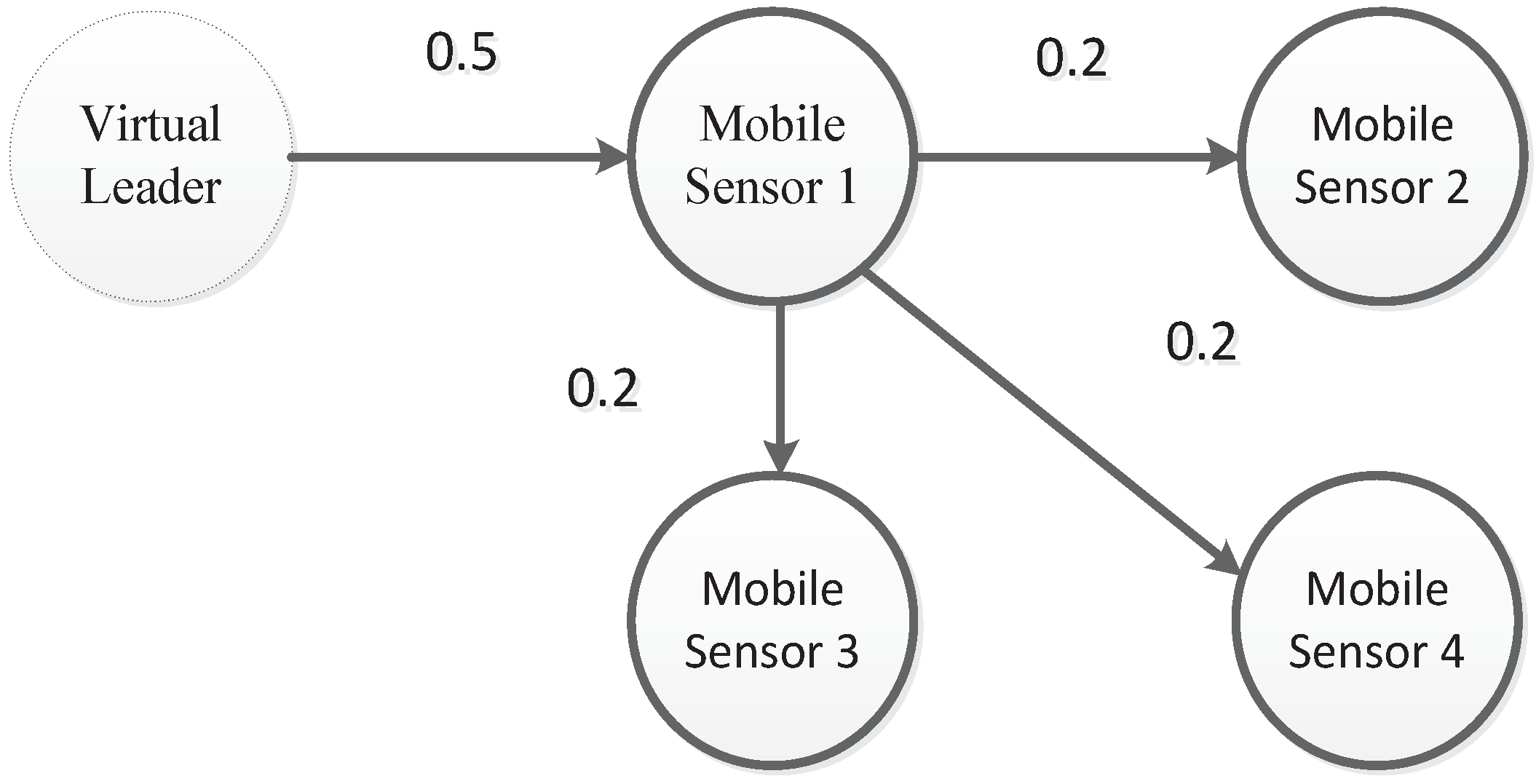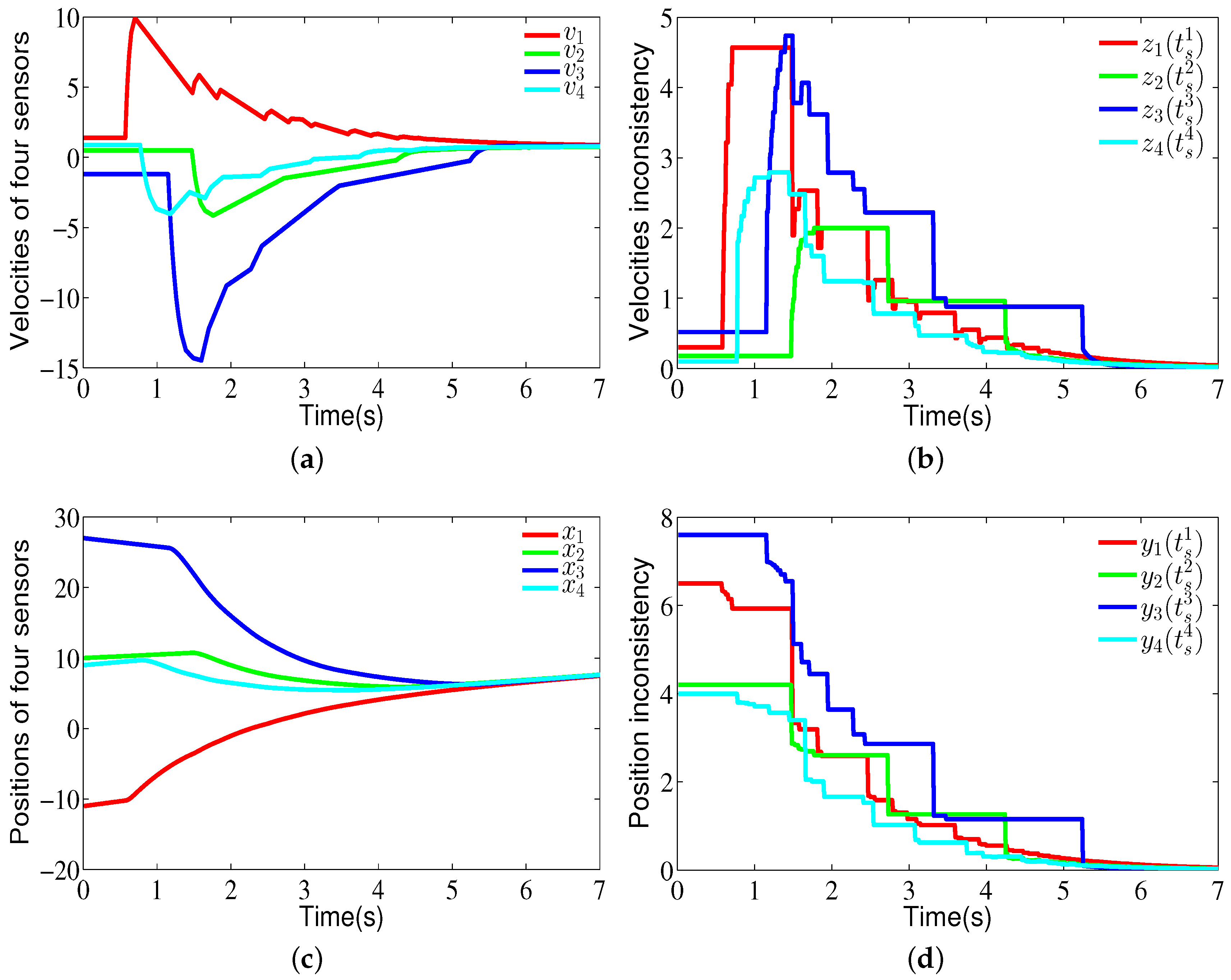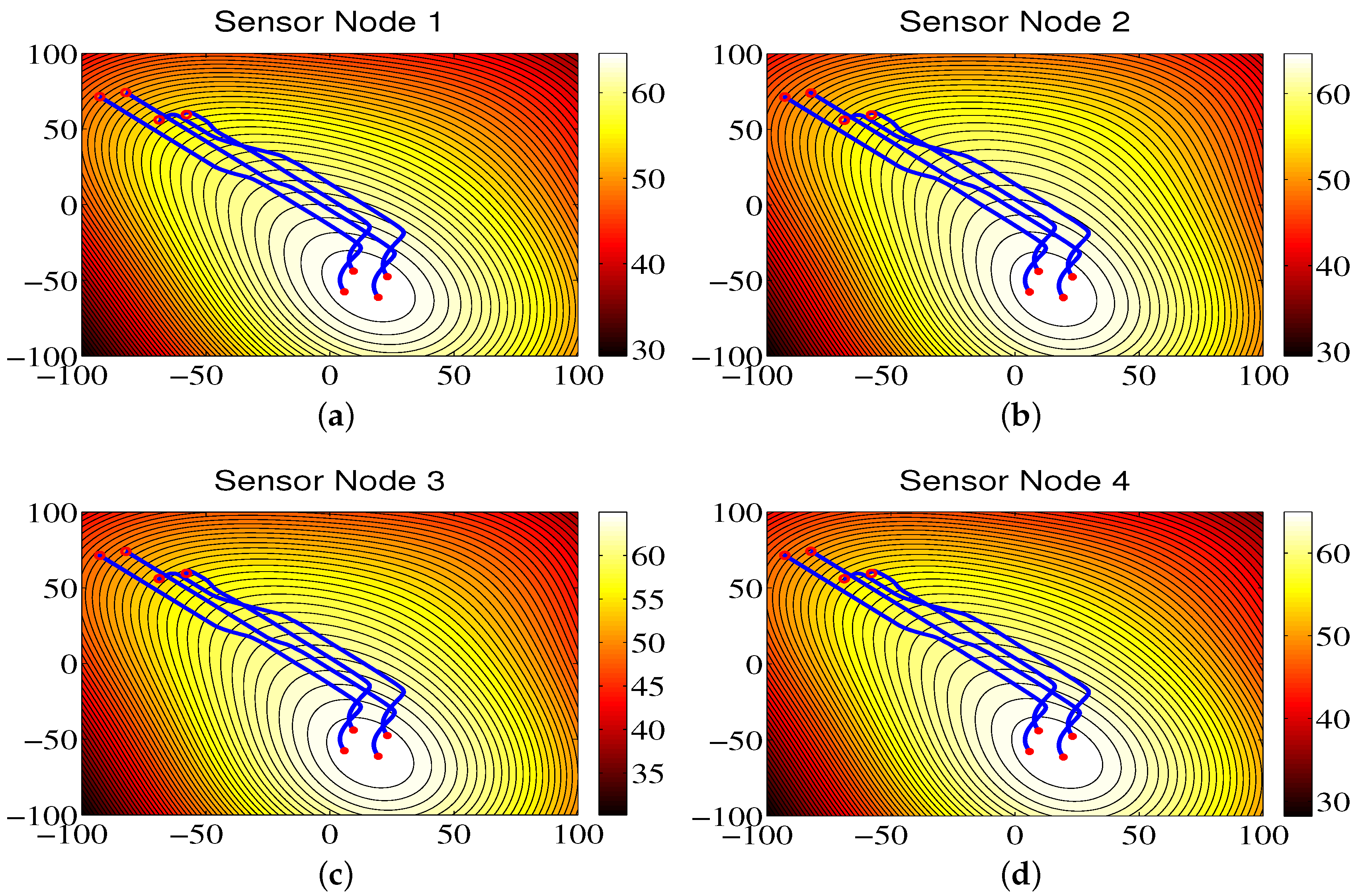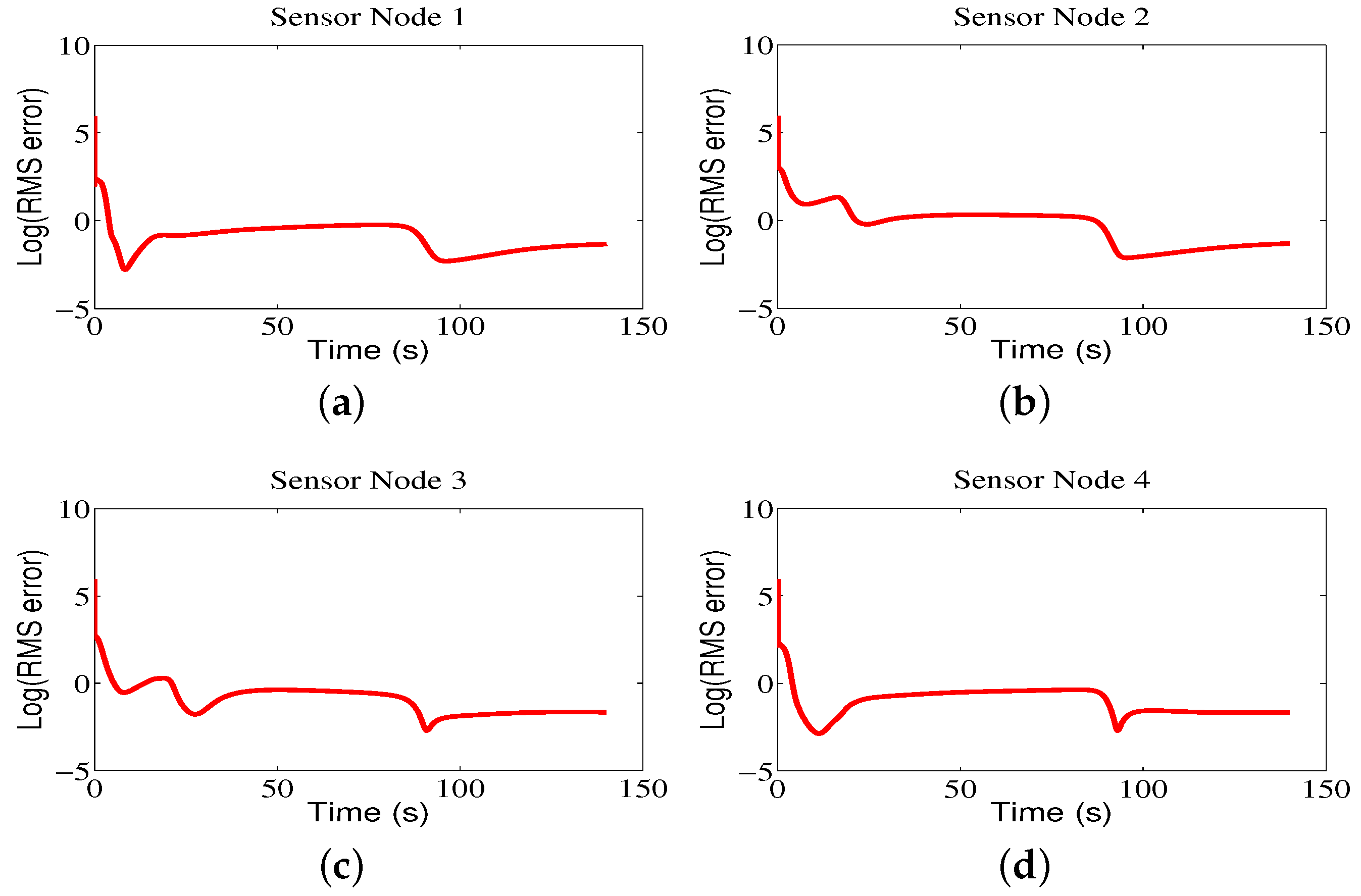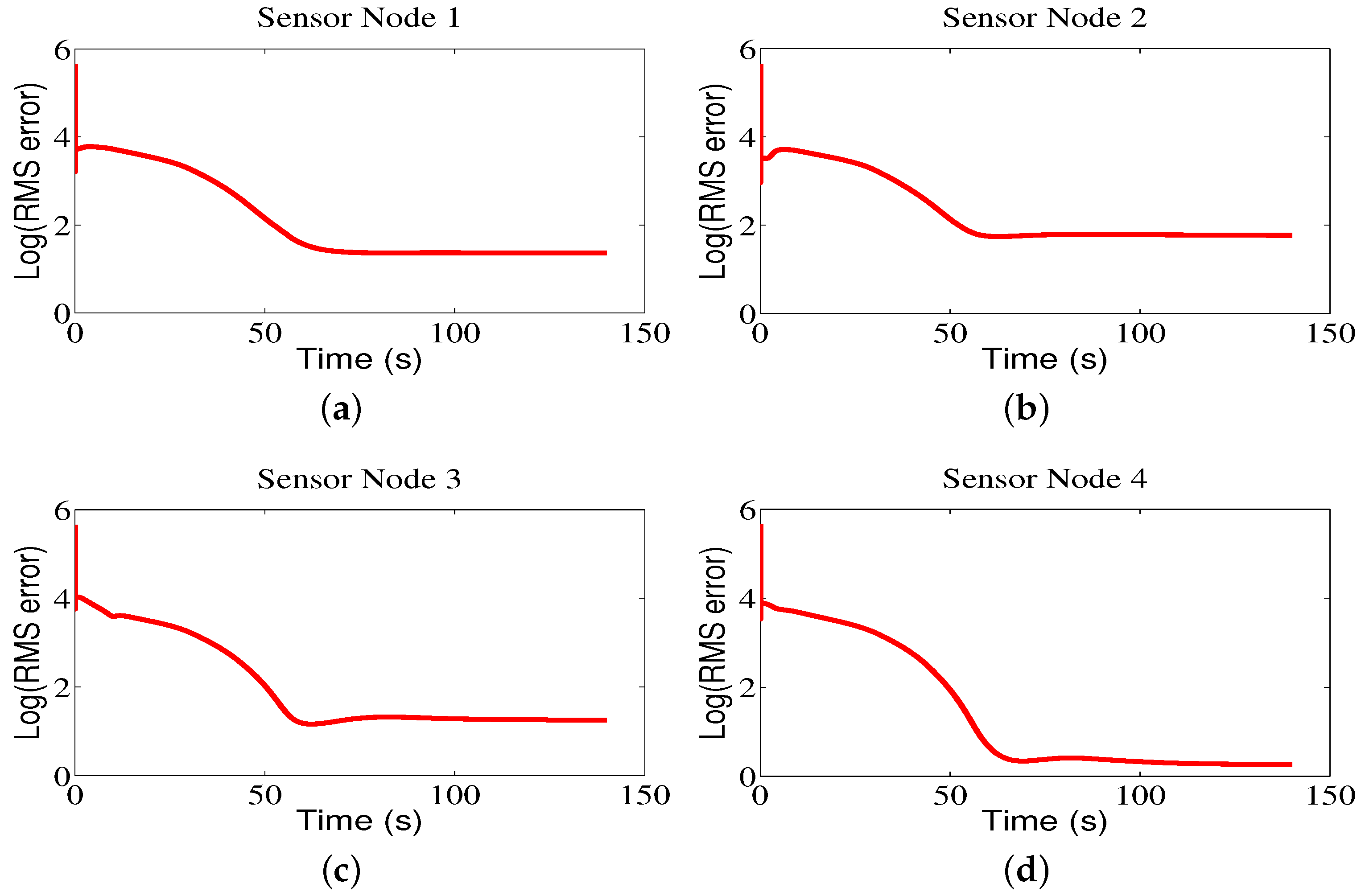Appendix C. Some Proposed Lemmas
The inequality is important to simplify the proof of Theorem 1. Lemma 4 shows the structure conditions of communication topology such that the above the inequality is satisfied.
Lemma 4. Let . represent the identity matrix. and . If a positive constant exists, where is the non-negative adjacency elements for weighted adjacency matrix , then .
Proof. Consider
as
It is straightforward to see that . In addition, because is a positive constant, . ☐
Lemma 5 and Lemma 6 describe the relationship of the given variables
,
and
in (
A2) and are used to simplify the proof of Theorem 1.
Lemma 5. Consider the mobile sensor network (A2). If , , for , then and , . Proof. If
,
,
, and
and
are nonzero for some indexes (
i) before consensus is achieved. Since
, we obtain
from (
A2) and
from (
A1). This means that
,
, and
. In addition, we get
from (
A2). Hence,
, which implies that
. Hence,
. On the other hand, since we have
, which implies that
, this contradicts that
and
are nonzero for some indexes (
i). The proof of this lemma is completed. ☐
Lemma 6. Consider the mobile sensor network (A2). There is a positive constant () which establishes the following inequality: Proof. Since
where
, we have
Let
and the corresponding eigenvalues are
and
, respectively. It is clear to see that
is a semi-positive definite matrix. Since
, by Lemma 5,
if
, where
. Consider the set
and this set is bounded and closed. For
, we set
which exists and is larger than zero. Therefore, we obtain
The proof of this lemma is completed. ☐
Under the proposed event-based rule (
2) for the mobile sensor network (
A2), we show an inequality condition that is used to simplify the proof of Theorem 1.
Lemma 7. Consider the mobile sensor network (A2) using the event-based rule (2). The following inequality holds:where and is a positive constant. Proof. Further, we have
where
,
,
,
, and
. Event-based rule (
2) enforces the following conditions as
for
, which means
From Lemma 6, we have
. Further, we obtain
. Hence, we derive
Next, from Lemma 2,
such that
.
from Lemma 2. Hence, we have
where
. ☐
Lemma 8 shows the conditions of the parameters from the proposed event-based rule (
2) which is used to simplify the proof of Theorem 1.
Lemma 8. For the mobile sensor network (A2) using the event-based rule (2), if positive constants and exist, the following inequality is established: Proof. We consider the event-triggered rule (
2) and have
. Moreover,
Clearly, one can derive
where
. Since
, we get
☐
Appendix D. Proof of Theorem 1
The following proof is divided into four parts. In Part I, we prove the given Lyapunov candidate function, . In Part II, we prove that mobile sensor network (2) asymptotically reaches consensus. In Part III, we prove that mobile sensor network (2) reaches consensus in finite time. In Part IV, Zeno-behaviors are excluded from mobile sensor network (2) before consensus is achieved.
Part I: We prove the given Lyapunov candidate function,. The following Lyapunov candidate function is given as
where
is a n-dimensional unit matrix and
. From Lemma 4, we obtain that for any vector
,
, which means
is a positive definite matrix.
The following matrix variable is set as
As
is a positive definite matrix, it can be rewritten as
where
is a diagonal matrix consisting of the eigenvalues of
. Then, we derive
The below matrix variable is derived as
Further, the eigenvalues of matrix
are solved as
The eigenvalues of
are calculated by
where
.
and
are called the eigenvalues of
. When
, i.e.,
where
is the minimum eigenvalue of
, and
has positive eigenvalues. As a result, the matrix
is a positive definite matrix. Thus,
.
Part II: We prove that mobile sensor network (2) asymptotically reaches consensus.
We obtain the derivative of the Lyapunov candidate function (
A3) for time
t as
One can see that consists of five items. The first item is . The second item is . The third item is . The fourth item is . The fifth item is . In order to use the Lyapunov theory, we first deal with the third item and the fourth item.
Consider the third item; from Lemma 4, we obtain the following inequality as
Consider the fourth item, by Lemma 7, we have the following inequality as
Substituting (
A5) and (
A6) into (
A4) leads to the following inequality as
Since , .
From Lemma 8, we have the following inequality as
Substituting (
A8) into (
A7) gives the following result:
where
.
Since , , and , . if and only if and . Hence, the state converges asymptotically to , and it illustrates that and for any .
Part III: We prove that mobile sensor network (2) reaches consensus in finite time.
Since
from Lemma 6 and the state
can asymptotically converge to
in Part II, we have
and
for each
, which implies
where
.
Assuming that
is the maximum eigenvalue of
and that
. From Lemma 2, we obtains
. Moreover, from (
A9), we have
. The constant
is defined as
and we have
. By Lemma 1,
and
,
in finite time.
Part IV: Zeno-behaviors are excluded from mobile sensor network (2) before consensus is achieved.
Note that
and
is a constant for
. Hence, we derive the following inequality as
where
is the maximum value of the velocity’s absolute value. Similarly, we can derive
where
is the maximum value of the acceleration’absolute value. Moreover, we have
. In terms of the event-based rule (
2), the next event is triggered at
, which means
at
. Hence, we have
. Before consensus is achieved,
, which means the Zeno-behaviors are avoided.
